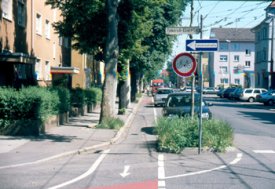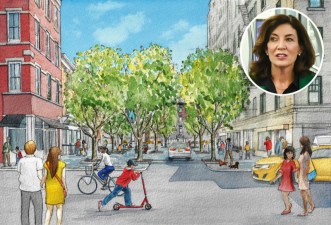Wiki Wednesday: Complete Streets
 With all the brouhaha over Broadway Boulevard lately, we thought it would be a good time to revisit the concept of Complete Streets. In a recent StreetsWiki entry, Andy Hamilton gets back to the basics.
With all the brouhaha over Broadway Boulevard lately, we thought it would be a good time to revisit the concept of Complete Streets. In a recent StreetsWiki entry, Andy Hamilton gets back to the basics.
A Complete Street is a roadway designed to safely accommodate all users
— pedestrians, bicyclists, motorists, transit riders, and those with a
disability. For decades, traffic engineers have designed streets,
particularly urban arterials, primarily for the efficient movement of
private motor vehicles. Residents across the U.S. are demanding street
features that consider the needs of other users.
Word. In fact, with Congressional legislation in the hopper and the backing of one of the nation’s most powerful lobbies, the AARP, the Complete Streets movement may be poised to go mainstream in time for next year’s federal transportation funding reauthorization. Writes Hamilton:
Since the early 2000’s, state laws, local ordinances, and regional
transportation funding agencies have begun a quiet revolution, adopting
Complete Streets policies (though not usually using this term). Such
policies are not one-size-fits-all, and need not be threatening to
traffic engineers. They generally require that, depending on the
context, roadway construction projects must include consideration of
its various users.
Now that higher gas prices have everyone from seniors to school kids looking at car-free means of transport, there is a lot of Complete Streets news to pass along. If you’d like to contribute to this or any other StreetsWiki entry — or add one of your own — you can start by joining the Livable Streets Network.
Photo: American Association of State Highway and Transportation Officials
